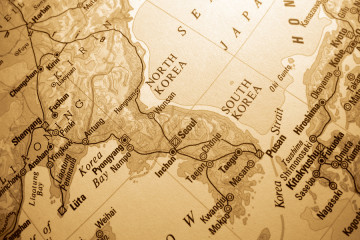Women and Family: Marriage as Cause of Stability, Not Just Effect: Megan McArdle

This is what social scientists call “selection effect,” and it is always lurking, threatening to confound seemingly clear-cut results. Unfortunately, in studies about marriage, there’s no definite answer.
This is the difficult territory that the Institute for Family Studies has devoted itself to mapping out. And its latest publication, “The Cohabitation Go-Round,” does offer some hints about whether we can write off all the benefits of marriage to selection effects, or whether we might have to accept that marriage itself makes some difference in outcomes.
But first, the study, which looks at levels of cohabitation, and whether children are more likely to experience a “union transition” before the age of 12, depending on whether they were born to a single mother, a cohabiting couple or a married couple. (A union transition consists of a couple either forming or breaking up, and it’s a decent proxy for instability that could be detrimental to a child.) They collected a broad sample of data on countries around the world, and broke the results down on the national level.
People who are familiar with the literature on marriage will be unsurprised at the answer: In most places, the children of single mothers are overwhelmingly more likely to experience a transition than those of cohabiting or married parents. Cohabiting couples, in turn, were in general more likely to transition (there were a few places where they were very slightly less likely to do so, but this tended to occur in places where the initial dataset wasn’t very large, and may therefore simply represent random variance).
Interestingly, the size of the marital advantage differed substantially between countries. Even more interestingly, it appeared to be unrelated to the number of cohabiting couples in the general population. Why is this interesting? Because it cuts against a longstanding theory: that as the level of cohabitation goes up, cohabitation will effectively start to look like marriage, weakening the correlation between children’s well-being and parents’ marital status.
However, that doesn’t necessarily tell us whether selection effects are at work. A society’s values about marriage aren’t the only thing that affect the stability of its unions; economic forces also undoubtedly play a role, for example, and those vary widely by country. A simple international comparison cannot tell us whether anything we discover is selection effect or causation.
But there’s one way to slice the data that’s more revealing: look at the change in cohabitation rates over time within the same country, and compare it to the change in the number of kids who aren’t living with both biological parents by age 12. And there does appear to be a relationship — implying that increasing levels of cohabitating parents will lead to increasing levels of “union transition” before the age of 12.
That’s not proof positive, of course. A changing economy might make families less stable, and also make parents more likely to cohabit rather than marry, and it might be the economic change rather than the cultural mores that does most of the work.
Nonetheless, it is a small piece of evidence for the proposition that marriage matters. And given the impossibility of doing controlled experiments on families, in which we arbitrarily assign people to marriage, cohabitation or single parenthood, this is the quality of evidence we’re going to have to work with if we want to study these questions. And these questions certainly are worth studying.
This column does not necessarily reflect the opinion of the editorial board or Bloomberg LP and its owners.







No Comment